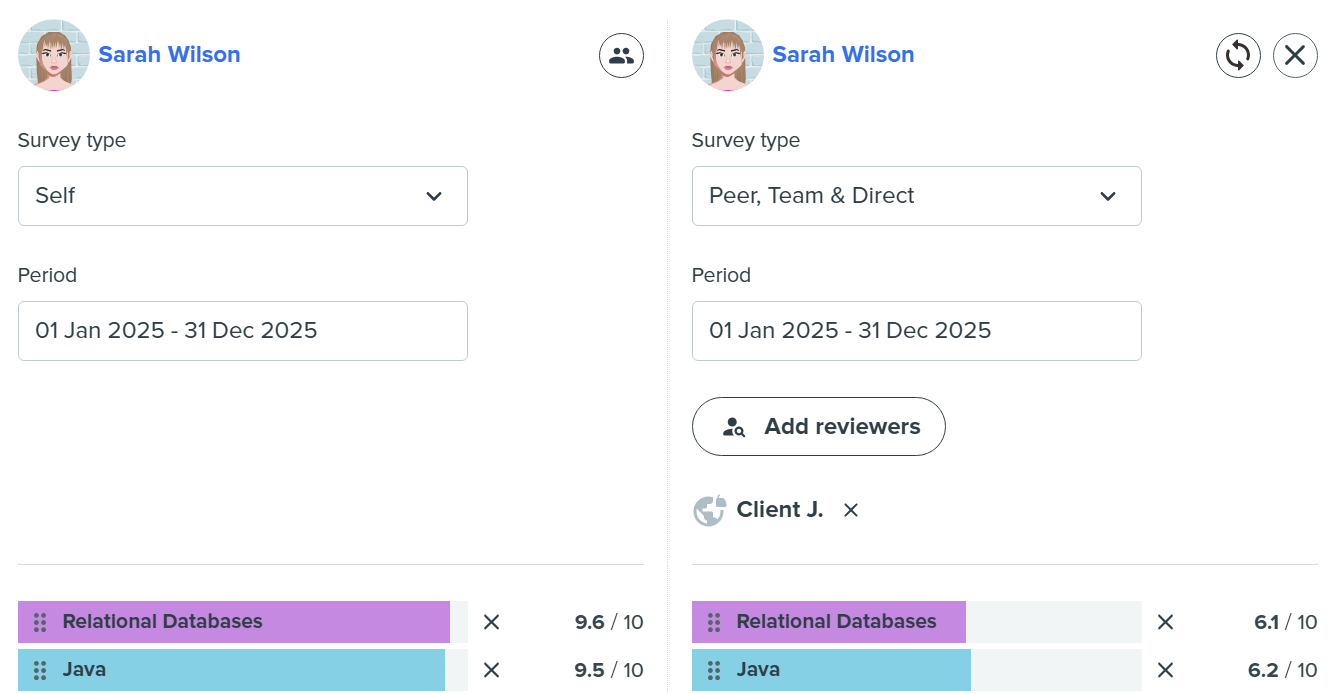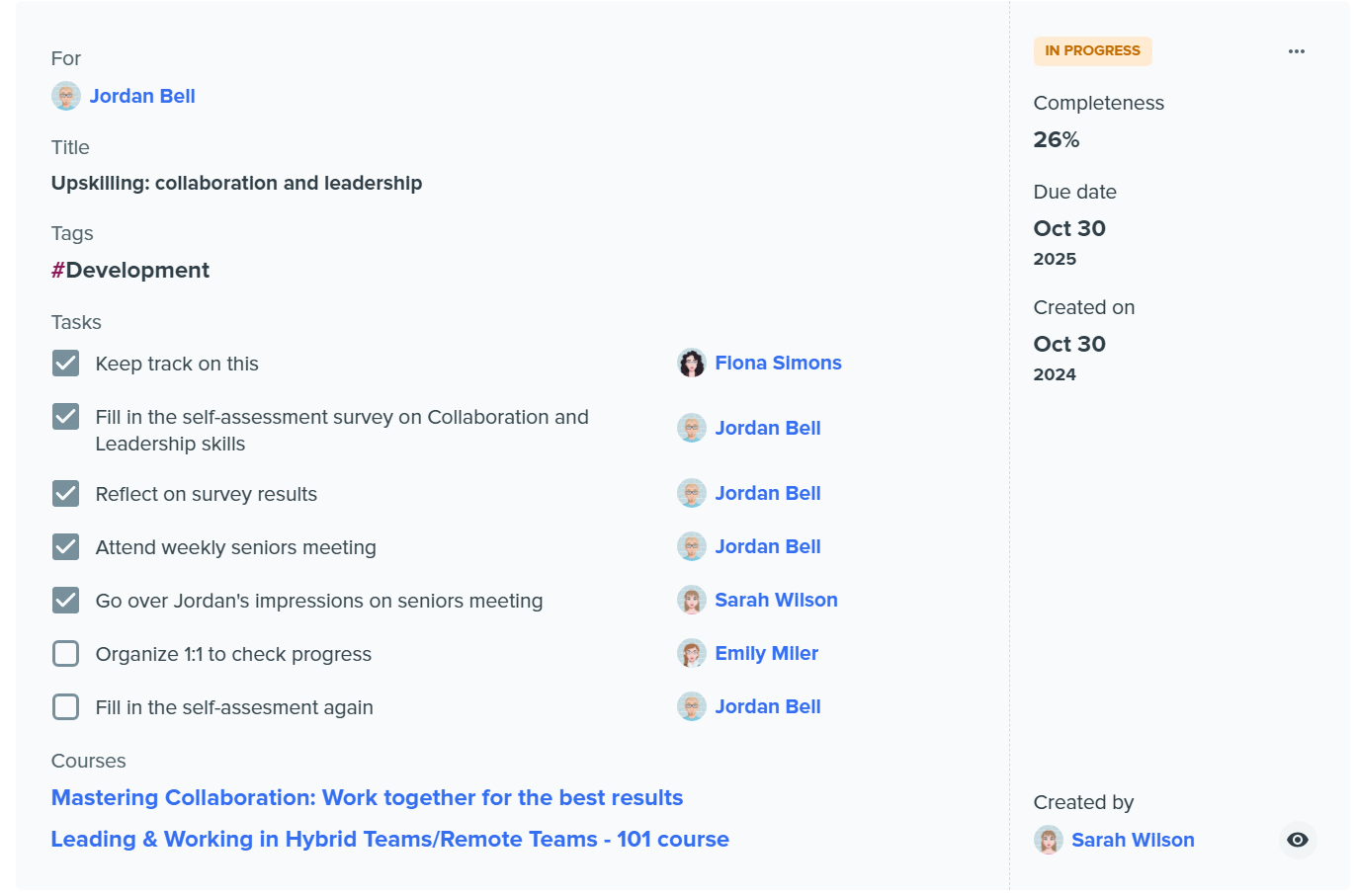Many teams claim to value openness and feedback, but when it comes to upward feedback, most lack a reliable way to make it happen.
People hesitate to speak up to their managers, even when something isn’t working as it should. They hold back criticism of peers to avoid tension. And they rarely feel confident enough to raise concerns about leadership decisions, especially in growing teams where roles shift fast and power dynamics aren’t always clear.
This doesn’t happen because people lack opinions but because they lack a system that makes constructive feedback for manager feel safe, expected, and actionable. Without that, the real input that the teams need to improve never reaches the people who can make a difference.
In this article, we’ll break down what blocks upward and peer feedback in tech teams, why most feedback systems fail to address these issues, and how to create a structure where feedback works, not just top-down, but in every direction.
Why most feedback systems fail
It’s easy to say that constructive feedback for manager is part of the company culture. But without structure, safety, and follow-through, most systems collapse under their good intentions.
In many teams, feedback is collected sporadically through one-off surveys, annual reviews, or Slack messages that disappear after a day. Even when feedback is requested, there’s often no clear format for giving it, no guarantee of anonymity, and no visible result. People usually don’t see the changes their input produces, so they stop giving it.
This isn’t just a minor flaw; it actively undermines trust.
Another common issue is that giving constructive feedback to peers and upward feedback are treated as optional. Teams might include one or two vague questions in a survey, such as “Is your manager supportive?” and consider the job done. But without clear definitions, guidance, and a dedicated space for this type of input, it gets lost or ignored.
Many general HR tools include an upward feedback section, but in practice, it’s often a checkbox feature, not structured, not recurring, and rarely integrated into day-to-day work. As a result, critical blind spots remain until they turn into disengagement or attrition.
And in fast-moving teams, especially in tech, waiting until the end of the quarter or year is simply too late. Feedback needs to be integrated into the workflow — concise, regular, and directly linked to outcomes.
What an authentic feedback culture looks like
An authentic feedback culture doesn’t mean everyone speaks freely all the time. It means the team has a shared expectation and a shared process for surfacing what matters, even when it's uncomfortable.
The key difference is structure. In teams with strong feedback habits, 360 feedback isn’t reactive or random. It’s part of how work gets done. Upward feedback isn’t rare, and giving constructive feedback to peers isn’t a personal risk. Both are expected, normalized, and clearly integrated into team rituals.
Psychological safety in teams plays a central role here, but safety doesn’t mean comfort. It means people trust that they can say something critical without being penalized for it. It means feedback is received as a contribution, not as conflict.
This kind of culture isn’t built with slogans. It’s built with mechanisms:
- Recurring check-ins that include space for upward and peer input;
- Feedback forms that ask the right questions, not just about delivery but about support, communication, and leadership;
- Visible changes based on feedback, so people know it’s worth speaking up.
Before trying to “encourage openness,” teams need to understand what absolute psychological safety in teams looks like. In this short TED Talk, Amy Edmondson, a Harvard Business School professor and leading researcher on team dynamics, explains that it’s not about being nice or avoiding tension. It’s about creating an environment where people can speak up, take risks, and learn together.
In growing tech teams, this matters even more. Roles evolve, priorities shift, and people take on responsibilities that don’t always match their titles. Without regular, structured input from peers and direct reports, managers operate on guesswork and miss the signals that would help their team grow.
💡 According to the Niagara Institute, teams with high psychological safety in teams experience 76% higher engagement and 27% lower turnover compared to teams with low safety scores.
How to encourage upward and peer feedback
Building a culture where feedback flows in all directions takes more than intent. It requires simple, repeatable mechanisms that show people how and when to speak up, and what happens next.
Here are three ways teams can create space for upward and peer feedback without adding complexity or tension.
1. Build recurring, structured input into the workflow
One of the biggest mistakes teams make is treating feedback as a once-a-year event. But trust isn’t built in cycles; it’s built through repetition.
Instead of relying on engagement surveys or end-of-cycle reviews, introduce lightweight check-ins that include clear prompts for peer and upward feedback. These can be monthly or quarterly, but the key is consistency and scope. Don’t just ask about delivery or goals; include questions about collaboration, support, and leadership.
💡 According to Gallup, highly engaged teams experience 21% lower turnover in high-turnover organizations and 51% lower turnover in low-turnover ones.
2. Make feedback safe and visibly useful
People won’t share constructive feedback for manager if they don’t trust what will happen after. That’s why psychological safety in teams alone isn’t enough; teams need visible feedback loops.
This means acknowledging what was said, sharing patterns (anonymously when necessary), and communicating the actions being taken as a result. Even when no change happens, explaining why not builds more trust than silence.
3. Use a system that supports feedback from every direction
Most tools are designed for top-down reviews. But if you want honest peer and upward input, you need HR infrastructure that makes it seamless.
In Kadar, peers, self, and manager all live in one place, side by side. Feedback is easy to give, anonymous by default when needed, and directly tied to development plans and 1:1 follow-ups: no extra sheets, no lost notes, and no confusion about what happens next.
And because Kadar includes pre-set question templates, teams never start from a blank screen. Feedback becomes part of the rhythm, not an exception.
How Lincoln Financial made upward feedback work
Upward feedback often fails not because people won’t speak, but because nothing happens after they do. Lincoln Financial took a different approach.
Instead of just collecting input, they built an “employee listening” strategy that combined structured employee surveys with collaborative follow-up. Employees weren’t just asked what wasn’t working; they were also involved in shaping the fixes.
After launching the program, 76% of employees reported believing internal growth was possible in their roles, representing a significant shift from earlier engagement levels.
What made the difference?
- Feedback wasn’t a one-time form. It became part of an ongoing loop.
- Employees were included in the action planning process, not just asked for their opinions.
- Progress was tracked over time, which built trust and momentum.
It’s a valuable reminder: collecting feedback isn’t enough. People need to see that it leads somewhere; otherwise, they stop participating.
Smaller, fast-moving teams don’t need a complete “program” to do this. But they do need structure. A regular rhythm, a way to connect input to action, and tools that make feedback safe and visible, that’s the foundation.
How Kadar makes upward and peer feedback easier and safer
For feedback to work, it needs to be regular, safe, and lead to action. That’s exactly what Kadar was built to support. Here’s how:
- Structured 360° input

Self, peer, and manager perspectives are collected and displayed side by side, allowing everyone to see where perceptions align or diverge. It’s not just “feedback,” it’s calibration.
- External feedback without login

For project-based teams, feedback from clients or external collaborators can be added without requiring them to register or buy licenses.
- Feedback that drives next steps

Every input can be connected to action plans and tracked over time in future 1:1s. That way, nothing gets lost in a spreadsheet.
If you want honest feedback, make it safe to open up
Peer and upward feedback don’t happen just because teams say they’re open to it. They occur when there’s structure, trust, and a straightforward way to act on what people share.
Without that, feedback stays vague. Or silent. Or performative. However, with the right system, simple, safe, and repeatable, teams begin to surface what truly matters. And that changes how they grow.
If your current process relies on intuition, scattered notes, or a few vague survey questions, it may be time for something better.
Try Kadar for free and see what happens when your team feels safe enough to speak honestly.


